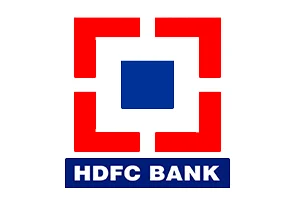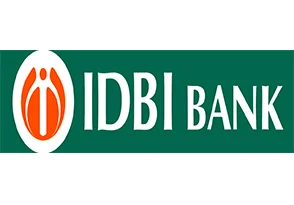Save Big on your 2 Wheeler Insurance Premium
*Savings on premium are based on the comparison between the highest and the lowest premium for ODC by different insurance providers for a vehicle with the same IDV and same NCB for all providers.
*Insurance is the subject matter of solicitation. For more details on benefits, exclusions, limitations, terms and conditions, please read sales brochure/policy wording carefully before concluding a sale.










Bike insurance is a crucial aspect of motorcycle ownership. It provides financial protection against a variety of risks, including accidents, theft, natural disasters, and third-party liabilities. Whether you own a scooter for daily commuting or a high-end superbike for weekend adventures, understanding bike insurance is essential. Bike insurance is a contract between the bike owner and an insurance company. The insurer promises to cover financial losses or damages to the bike in exchange for a premium. The primary purpose of bike insurance is to provide financial protection against unexpected events that could lead to costly repairs or replacements.
Legal Requirement of 2 Wheeler Insurance
In most countries, having at least third-party liability insurance is mandatory. This requirement is to ensure that if a rider causes an accident, there is financial protection for the victims. Riding without insurance can lead to hefty fines, license suspension, or even imprisonment in some regions.
Benefits of Bike Insurance
1. Financial Protection: Covers the cost of repairs or replacement in case of damage or theft.
2. Legal Compliance: Ensures you meet the legal requirements to ride your bike.
3. Peace of Mind: Reduces the stress of potential financial burdens from accidents or theft.
4. Third-Party Liability Coverage: Protects against legal liabilities arising from damages caused to third parties.
Types of Bike Insurance
Understanding the different types of bike insurance is crucial to selecting the right policy for your needs.
1. Third-Party Liability Insurance
Mandatory by Law: Third-party liability insurance is the most basic form of bike insurance and is required by law in most countries. It covers:
- Third-Party Injury or Death: Compensation for injury or death of a third person caused by an accident involving the insured bike.
- Third-Party Property Damage: Compensation for damage to third-party property. Limitations: It does not cover damages to your bike or personal injuries.
2. Comprehensive Bike Insurance
Broad Coverage: Comprehensive bike insurance offers extensive coverage, including both third-party liabilities and own damage. It covers:
- Own Damage: Protects against damage to your bike due to accidents, fire, theft, vandalism, natural disasters, and other unforeseen events.
- Personal Accident Cover: Provides financial assistance in case of injury or death of the rider.
- Third-Party Liability: Includes all the benefits of third-party liability insurance.
- Advantages: This type of insurance provides the most extensive protection, making it the preferred choice for many bike owners.
3. Standalone Own-Damage Insurance
Flexible Option: Standalone own-damage insurance allows you to have separate coverage for damages to your bike if you already have third-party liability insurance. It covers:
- Accidents: Damages due to road accidents.
- Theft: Compensation if the bike is stolen.
- Natural Disasters: Protection against damages caused by events like floods, earthquakes, and storms.
- Man-Made Disasters: Covers damages due to vandalism, riots, or other human actions.
- Benefits: Offers flexibility to choose the level of coverage and is suitable for those who already have third-party liability insurance.
Add-On Covers
Add-on covers, also known as riders, enhance the basic bike insurance policy by offering additional protection and benefits. Here are some popular add-ons:
1. Zero Depreciation Cover
Full Claim Settlement: This add-on ensures that you receive the full claim amount without any deduction for depreciation on parts. It covers:
- Plastic Parts: Full coverage without depreciation deduction.
- Fiber Parts: No depreciation deduction.
- Advantage: Ideal for new bike owners as it maximizes the claim amount.
2. Engine Protection Cover
Engine Safety: This cover provides protection specifically for the engine, which is often excluded in standard policies. It includes:
- Water Ingress: Damage due to water entering the engine.
- Oil Leakage: Damage caused by oil leakage.
- Benefit: Essential for those living in flood-prone areas or those with high-end bikes with expensive engine parts.
3. Roadside Assistance
On-the-Spot Help: This add-on provides assistance in case of a breakdown or emergency. Services include:
- Towing Service: Transporting the bike to the nearest garage.
- Minor Repairs: On-site minor repairs like flat tire fixing.
- Fuel Delivery: Emergency fuel delivery if you run out of fuel.
- Convenience: Ensures that help is always available when needed, providing peace of mind during long rides.
4. Personal Accident Cover for Passengers
Extended Safety: This cover extends personal accident cover to pillion riders. It includes:
- Accidental Death: Compensation in case of accidental death of the passenger.
- Permanent Disability: Compensation for permanent disability caused by an accident.
- Protection: Ensures that both the rider and the passenger are financially protected in case of an accident.
5. Consumables Cover
Consumables Protection: This add-on covers the cost of consumables used during the repair of the bike, such as:
- Engine Oil: Replacement of engine oil.
- Nuts and Bolts: Cost of replacing nuts, bolts, screws, and other small parts.
- Benefit: Reduces out-of-pocket expenses during repairs.
Factors Influencing Bike Insurance Premiums
Several factors influence the cost of bike insurance premiums:
1. Bike Model and Make
Cost and Parts: The make and model of your bike significantly impact the premium. Factors include:
- Engine Capacity: Bikes with higher engine capacity generally have higher premiums due to increased risk.
- Price of the Bike: Expensive bikes attract higher premiums as the cost of repairs and replacement parts is higher.
2. Age of the Bike
Depreciation: Older bikes usually attract lower premiums due to depreciation. However, very old bikes might have higher premiums due to difficulty in finding spare parts.
3. Location
Geographical Risk: The area where you live affects your premium. Factors include:
- High-Risk Areas: Areas with higher accident or theft rates have higher premiums.
- Natural Disasters: Areas prone to natural disasters may attract higher premiums.
4. Rider’s Age and Experience
Experience Counts: Younger or less experienced riders might face higher premiums due to perceived higher risk. Factors include:
Driving History: A clean driving record with no accidents or violations can lead to lower premiums.
Age: Older, more experienced riders are often charged lower premiums.
5. No-Claim Bonus (NCB)
Reward for Safe Riding: Insurers offer discounts on premiums for claim-free years. Benefits include:
- Discounts: The discount increases with each consecutive claim-free year.
- Transferable: NCB can be transferred if you switch insurers or buy a new bike.
6. Security Features
Enhanced Safety: Bikes with advanced security features may attract lower premiums. Features include:
- Anti-Theft Devices: Installation of approved anti-theft devices can reduce premiums.
- GPS Tracking: Having a GPS tracker can also lead to discounts.
How to Choose the Best Bike Insurance Policy?
Selecting the right bike insurance policy requires careful consideration of your needs and comparing various options. Here are some steps to help you choose the best policy:
1. Assess Your Needs
Coverage Requirements: Determine your coverage needs based on factors such as the age and value of your bike, your usage, and your budget.
Type of Coverage: Decide whether you need third-party, comprehensive, or standalone own-damage insurance.
Add-Ons: Evaluate which add-ons are beneficial for you based on your usage and location.
2. Compare Policies
Policy Comparison: Use online tools and resources to compare policies from different insurers based on coverage, premiums, and benefits.
Coverage Details: Look at the inclusions and exclusions of each policy.
Premium Costs: Compare the premiums and choose the one that offers the best value for money.
3. Check Claim Settlement Ratio
Insurer’s Reliability: Opt for insurers with high claim settlement ratios, as this indicates their reliability in processing and settling claims.
Settlement Time: Consider the average time taken by the insurer to settle claims. – Customer Feedback: Look for reviews and feedback from existing policyholders regarding their claim experience.
4. Read Policy Terms and Conditions
Understanding Fine Print: Ensure you are aware of all inclusions, exclusions, and conditions of the policy to avoid surprises during claim time.
Exclusions: Be aware of what is not covered under the policy.
Deductibles: Understand the deductibles and co-payment clauses.
5. Customer Reviews and Feedback
User Experience: Consider feedback from existing policyholders regarding customer service, claim handling, and overall satisfaction.
Online Reviews: Check online reviews and ratings for various insurers.
Recommendations: Seek recommendations from friends and family who have experience with bike insurance.
Steps to Buy Bike Insurance
Buying bike insurance is a straightforward process. Here’s a step-by-step guide:
1. Gather Information
Bike Details: Have all necessary details about your bike handy, including make, model, year of manufacture, and registration number.
Personal Information: Keep your personal details, such as your driving license number, ready.
2. Get Quotes
Multiple Sources: Obtain quotes from various insurers to find the best deal.
Online Comparison Tools: Use online comparison tools to get multiple quotes quickly.
Direct Contact: Contact insurance agents or brokers for personalized quotes.
3. Select and Customize
Choose Policy: Select the policy that best fits your needs and customize it with desired add-ons.
Policy Features: Ensure the policy covers all your requirements.
Add-Ons: Add necessary riders to enhance your coverage.
4. Make Payment
Online Purchase: Most insurers offer an easy online purchase process with secure payment options.
Payment Methods: Choose from various payment methods like credit/debit cards, net banking, or UPI.
Installments: Check if the insurer offers the option to pay premiums in installments.
5. Receive Policy Documents
Digital and Physical Copy: After payment, you will receive a digital copy of the policy instantly and a physical copy via mail.
Verify Details: Ensure all the details in the policy document are correct. – Policy Storage: Store the physical copy safely and keep a digital copy accessible.
Claim Process
In the event of an accident or damage, knowing the claim process can help you navigate it smoothly. Here are the steps to file a claim:
1. Immediate Reporting
Inform Insurer: Notify your insurer immediately after an incident to start the claim process.
Helpline Number: Call the insurer’s helpline number to report the claim.
Online Reporting: Some insurers offer online claim reporting through their website or mobile app.
2. Document Submission
Required Documents: Submit the necessary documents to support your claim. These may include:
- Claim Form: Fill out the claim form provided by the insurer.
- FIR: File an FIR in case of theft or major accidents and submit a copy.
- Bike Documents: Provide the bike’s registration certificate and your driving license.
- Repair Bills: Submit repair bills and estimates from the garage.
3. Survey and Approval
Damage Assessment: An insurance surveyor will assess the damage and approve the claim.
Surveyor Visit: Arrange for a surveyor to inspect the bike and estimate the repair costs.
Approval: Once the surveyor approves, the claim is processed.
4. Settlement
Claim Processing: After approval, the insurer will process the claim and settle the payment as per the policy terms.
Cashless Claims: For cashless claims, the insurer will directly settle the bill with the network garage.
Reimbursement Claims: For reimbursement claims, you need to pay for the repairs and then get reimbursed by the insurer.
Tips for Lowering Bike Insurance Premiums
While bike insurance is essential, there are several ways to reduce your premium costs without compromising on coverage:
1. Maintain a Good Riding Record Safe Driving: Avoid accidents and traffic violations to build a good record and earn NCB discounts.
- No-Claim Bonus: Accumulate NCB for each claim-free year to get premium discounts.
- Traffic Violations: Avoid traffic tickets and violations that can increase your premium.
2. Install Anti-Theft Devices Security Measures: Installing approved security devices can reduce premiums.
- Certified Devices: Use devices certified by the insurance company for discounts.
- GPS Tracking: Install GPS trackers to enhance bike security and reduce premiums.
3. Opt for Higher Deductibles Cost Sharing: Agreeing to pay a higher voluntary deductible can lower your premium.
- Voluntary Deductible: Choose a higher deductible amount to reduce the premium.
- Risk Assessment: Ensure you can afford the deductible amount in case of a claim.
4. Renew Policy on Time Avoid Lapses: Timely renewal of your policy helps in retaining NCB and avoiding higher premiums.
- Grace Period: Use the grace period to renew your policy without losing benefits.
- Auto-Renewal: Consider setting up auto-renewal to avoid missing renewal dates.
5. Bundle Policies Multi-Policy Discounts: Consider buying bike insurance from the same insurer as your other policies for bundled discounts.
- Home and Auto Insurance: Combine bike insurance with home or auto insurance for discounts.
- Family Policies: Insure multiple bikes or family members’ vehicles under one policy for savings.
Common Exclusions in Bike Insurance
Understanding the exclusions in your bike insurance policy is crucial to avoid surprises during claim time. Common exclusions include:
1. Normal Wear and Tear Regular Maintenance: Insurance does not cover damages due to normal wear and tear or lack of maintenance.
- Tire Wear: Damage to tires due to regular use is not covered unless the bike is damaged in an accident.
- Mechanical Breakdown: Failures due to mechanical or electrical breakdowns are excluded.
2. Drunk Riding Illegal Activity: Claims arising from accidents when the rider is under the influence of alcohol or drugs are not covered.
- DUI Violations: Driving under the influence (DUI) incidents are excluded from coverage.
3. Illegal Activities Unlawful Use: Damages caused while using the bike for illegal activities are not covered.
- Speeding: Accidents during illegal racing or speeding are excluded.
- Unauthorized Use: Use of the bike for purposes not stated in the policy (e.g., commercial use if insured for personal use) is excluded.
4. Unlicensed Riding Valid License Requirement: Claims are not entertained if the rider does not have a valid driving license at the time of the accident.
- License Expiry: Riding with an expired license also leads to claim rejection.
5. War and Nuclear Risks Extraordinary Events: Damages caused by war, nuclear risks, or related perils are not covered.
- Civil Unrest: Damages due to civil unrest, riots, or terrorist activities are generally excluded.
6. Depreciation Value Reduction: Depreciation of bike parts over time is not covered unless you have a zero-depreciation add-on.
- Part Replacement: Claims for part replacement will be reduced based on the depreciation rate of the parts.

